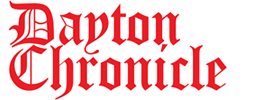Public access to school information questioned
February 24, 2022
DAYTON–The Dayton School Board heard a grievance over superintendent recommendations, and in other topics, heard updates on mask mandates, position statements, and financial report impacted by low student enrollment. Directors convened the hybrid meeting February 16, which was well attended with 27 on Zoom and more than a dozen in person.
Community member and regular attendee at the meetings, Pearl Dennis, spoke in reference to the meeting agenda, noting that an action item was listed separate from previous action items. The item was listed as Superintendent Recommendations to the Board to be presented after an executive session, at a time when many may leave the meeting. She questioned whether the Board expected to take action on it that evening and said that as far as she knew, the recommendations have never been presented to the Board before.
“It’s big,” Dennis said. “It’s got a lot of meat to it and I don’t understand why it’s kind of sneaking in here at the bottom without a lot of notice to the community or dialogue with the community.”
Strot responded that action was expected and the executive session was to discuss personnel associated with the recommendations.
“It’s a lot to push through at the very tail end of a school board meeting,” Dennis said,. “...With no notice to the community...that’s not the away to effect changes that are this big.
“One of the items in this proposal basically reinstates the position that seemed to me to create so much problem last spring in that we had one person trying to do two jobs...but they were failing miserably at one of them,” she said.
Dennis was referring to Strot’s fourth recommendation to reorganize the administrative structure, which calls for changing the school model to K-8 and high school and have the superintendent serve also as the high school principal, eliminating one administrative position.
Many other comments flooded in of mostly staff saying they were not made aware of these recommendations and were not given the opportunity to give feedback. Other recommendations included are to review the math curriculum and classes, engage students in changing the school culture, update the Career and Technical Education (CTE) courses, redo the master schedule and add additional electives, partner with Walla Walla Community College for classes for all high school students, and develop a financial plan for the current fiscal year and the next.
Following the executive session, Strot announced that action, on his recommendations, is delayed until the March 2 meeting. In the meantime, he invited anyone with questions, comments or concerns to contact him.
Board Chair Jeffrey McCowen opened the meeting with a statement about the pending announcement. “It’s been a long time and a long time coming, and for that we should celebrate,” McCowen said. “This last couple of years, the COVID restrictions have not been easy for students, staff, parents or anyone else within this state, country or globally.”
As has been publicized, other school boards around the State voted during the week of February 14 to end the mask mandate. The Office of the Superintendent of Public Instruction (OSPI) responded to those districts with threats of withholding State funding for noncompliance and met with all Washington school districts assuring them that Governor Jay Inslee would be announcing on February 17 the end of the indoor mask mandate for most settings, including schools, to begin the middle of March. As promised, the next day the governor set the date for end of the mandate for March 21.
Strot then contributed his recommendation to stay the course, until all requirements, dates and other details are known. “Last year in August when we opened up–a lot of schools didn’t open up and we were opened up with masks, but we were all here,” Strot said. “When most schools were only having half students coming every other day, we were having all students come every day. And so, I think it’s been a long 21-22 months, but I think we are in reach of it and for that I am thankful.
“I think that if we stopped wearing masks now for next couple weeks,” he said, “it comes at a risk to the district. My recommendation to the Board would be to wait until our Board meeting on March 2, and it’s a work session, and add a section for the mask. By then we’ll know exactly what the timeframe is, parameters and everything.”
During the public comment period that was just after the brief consent agenda, County Commissioner Charles Amerein made a statement about how various COVID guidelines have changed including those for masks. “These are all things that say this isn’t near as bad as they made it out to be, and we’ve been reacting this way all this time setting a bad example for the children telling them that it’s all right to be afraid–that that’s what you should be,” Amerein said. “You shouldn’t think critically. You should just do what you’re told and that’s what I object to, and I don’t think that’s what we should be teaching in the school.”
Elementary teacher Ginger Bryan responded in Zoom chat: “Many may choose to wear a mask, and we will honor them if they do,” she wrote. “I respectfully ask that you allow freedom of choice within the confines of state requirements. It is a matter of honor and teaching students that we respect them and their families and that we keep our word.”
Dennis questioned the district’s position on masks and about how much funding the district would be risking if they chose to stand up to the mandate. Strot answered that $289,000 would be withheld each month.
Board member Aneesha Dieu, who is the legislative representative, provided more information that the State could only start to withhold in April when the mandate would be over. Dennis said, “I think that’s something the school boards should know so you can make a good decision on behalf of our kids.”
Remote Business Manager Veronica Perez attended in-person and presented information about the enrollment decline. From five years, student enrollment has steadily dropped from just over 400 to about 336 currently, which is 14 fewer students than the number provided when Perez drafted her report in January.
According to Perez’s report based on a reduced attendance to 350, the financial impact is a revenue reduction of over $262,000 from the State. However, other funding sources not anticipated help fill the gap including an increase in the 2021-22 levy collection by almost $75,000 and additional grants totaling $70,000. But with current expenditures, it leaves the district at an estimated $360,000 ending fund balance which is less than the $450,000 budgeted. The $1 million contingency is in the budget to help unexpected expenditures. Perez emphasized that the district is in a good place saying that the budget is a “moving target every day” where “decisions can impact that ending fund balance.”








